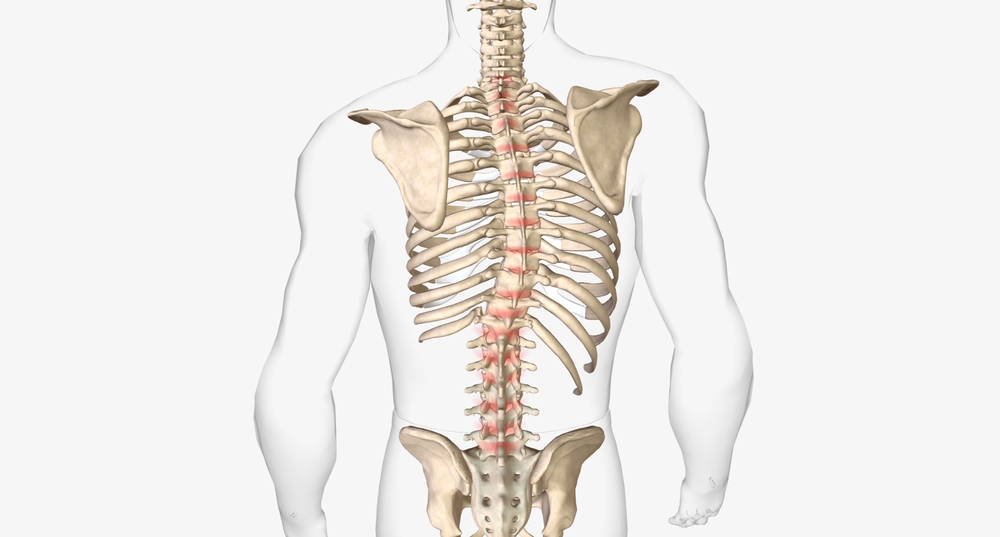
Scoliosis is a spine condition where the bend of the spine is defined by a lateral S or C-shaped curve. It is often found in rapidly developing/growing adolescents.
Anyone can get scoliosis. However, females are 8x more likely than males to be diagnosed with it. Roughly 3 million new cases of the condition are diagnosed each year, with a majority of them identified as idiopathic scoliosis —most prevalent in seemingly healthy children, with no known cause.
Often, the amount of spinal curvature is mild and doesn’t cause symptoms or require any special treatment beyond regular monitoring. Less commonly, however, the curve can be severe, causing back pain and often making breathing difficult.
Symptoms and Diagnosis of Scoliosis
Signs of scoliosis may include:
- A curved spine
- One shoulder and/or hip is higher than the other
- One shoulder blade is more prominent than the other
- A ribcage on one side that protrudes more than the other side (it may be more noticeable when bending over)
- A person’s head that is not centered over their pelvis
- Extra space between the body and a loosely hanging arm on one side of the body
X-rays of the spine are needed to confirm a scoliosis diagnosis. They also help healthcare providers to determine the type of scoliosis and the risk of its progression. X-rays are used to help measure the Cobb angle or the degree of sideways spinal curvature. Scoliosis is diagnosed when the Cobb angle is over 10 degrees.
Treatments for Scoliosis
The curve of the spine in people with scoliosis is typically stable, meaning it does not change over time. Sometimes, however, it worsens over time, often requiring treatment. For example, the curve of the spine may become more severe in adolescents undergoing periods of rapid growth during puberty. Also, in general, spines with a greater degree of curvature are at a higher risk of progressing.
In general, the goals of treatment are to prevent the progression of the spinal curve, relieve any symptoms, and reduce the degree of spinal curvature. Treatments for scoliosis include:
- Observation: Doctors may recommend monitoring the spine for individuals with mild scoliosis. Observation may involve seeing a health care provider regularly for a physical exam and X-rays of the spine. If the curve worsens, other treatments may be necessary.
- Braces: A brace may prevent or slow the progression of the spinal curve in growing children and adolescents with moderate scoliosis. There are several types of braces, including a rigid, plastic one known as the Boston brace (it was developed at Boston Children’s Hospital) and a nonrigid, flexible one. Some braces, including the Boston brace, can be worn under clothing and during many sporting activities.
- Casts: Infants and toddlers with scoliosis may wear a plaster cast as part of their treatment. Casts can help correct spinal curves. Every two to four months, a new cast is fitted to accommodate the child’s growth.
- Physical therapy: Scoliosis-specific physical exercises to improve range of motion and strength may help prevent the progression of the condition.
- Surgery: For severe cases, surgery or spinal fusions can be necessary.
How Chiropractic Care Can Help Individuals With Scoliosis
Getting specific chiropractic adjustments for scoliosis can help keep your spine in its best alignment, decrease pressure on your body’s nervous system, and strengthen your spinal muscles. Regular adjustments in developing children may also reduce the degree of the scoliosis curve by keeping spinal joints mobile, allowing for normal growth that can help straighten out the abnormal curvature.
Schedule a visit for chiropractic care at Vaida, and let Dr. Lydia and Dr. Rachael provide you with exercises and stretches to help support yourself or your child who has been diagnosed with scoliosis. For our patients with numerous back conditions, we also suggest using a McKenzie Lumbar Roll to ensure proper posture to better support your spine while sitting, especially for extended periods of time.
